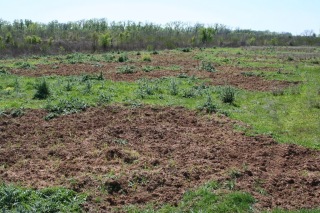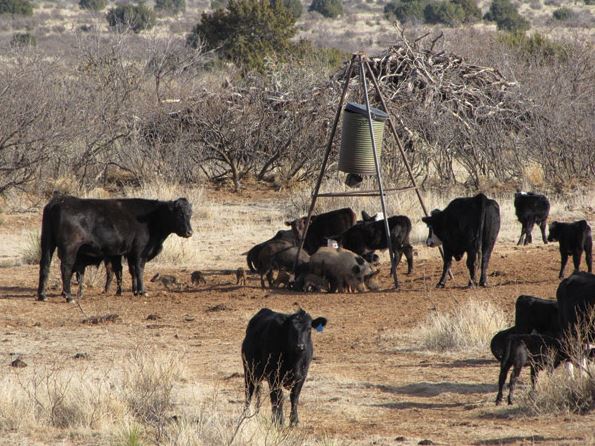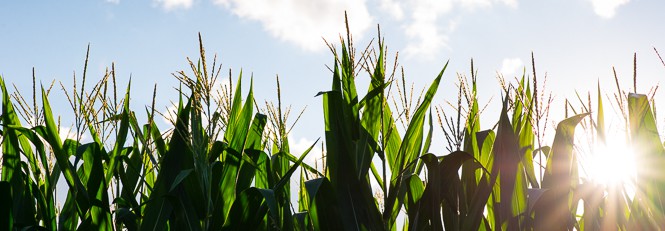The United States records an economic loss of an estimated 1.5 billion dollars each year from feral hogs. From an agriculture stand point, feral hogs cause 800 million dollars of damage across the United States. The feral hog is becoming one the biggest problems in agriculture to date in the southern part of the United States and soon to be the entire country. More than 6 million feral hogs spread across 35 states. One of the main reasons why they are so invasive and spreading so rapidly is because of their litter size and gestation length. The range that a feral sow can give birth is anywhere from 1-12 piglets, a sow can also have two litters per year. With that being said, the rate of which feral hogs are being born is quite fast; this is leading to major issues with agriculture in the United States.
Hogs In Agricultre
Crop Production
Many people like myself don’t acknowledge feral hogs and how they impact crop production. We generally focus on how to eliminate invasive weeds, diseases, or pests that have effects on yields and not so much on these invasive animals. Feral hogs impact crops by rooting ground, digging, trample, and consumption of crops. Someone might ask, “what is rooting, and trample?” Rooting is where a hog uses their “snout” or nose to move soil aside; trample is the mixing of soil by walking on it and causing compaction leaving the soil harder for vegetation to grow.

Livestock Production
One of biggest concerns livestock producers have are feral hogs. There are several different reasons why feral hogs may concern a livestock producer. A very strong concern would be that feral hogs are predators. If hogs get into a producers livestock they could quite possibly chase off the mothers and then begin to go after their young. The biggest concern would most definitely have to be disease. Disease is a very hard battle to fight, especially when a feral hog can contain up to 45 significant viral and bacterial diseases. This could potentially eliminate someone’s entire livestock population. All it takes is for one animal to get sick, then it is very challenging to catch it and stop it before it effects the animals dramatically.
Photo by USDA APHIS Wildlife Services

How can they be stopped?
With the fast growing population of hogs there has to be some sort of way to control the population. There are two major ways that they can be controlled. One being nonlethal and the other being lethal.
Nonlethal
There are several nonlethal methods to control feral hogs, these methods intended uses are to relocate the hogs to get them off property or keep them off the owners property. The most common method would be installing high quality fencing and checking it regularly. This would allow the owner to keep them off his or her property with very low input cost. Another method to keep unwanted hogs off property would be by having guard animals; this would allow the owner to know when there are hogs near by. Lastly someone could set out traps. A trapping system can be very effective but also very ineffective as well. The way a trapping system works is the hogs would be baited into the trap and then closed behind them. Some people use circular traps that are elevated off of the ground and then by via camera they can drop the trap and then the hogs are in a pen essentially. Feral hogs seem to cooperate with this trapping method the best because they do not feel nervous like they would having to enter a trap. The goal is to have as many hogs in the trapping area as possible. The major flaw with this method is sometimes the hogs will out run the speed of which the trap is falling and then escape.
Lethal
In some cases lethal options for controlling feral hog populations is the only option. Feral hogs can be hunted all year long without a limit to an individual. People also will take controlling hogs to the sky. With this I mean people will have helicopters set up to where they can eliminate numerous hogs on a given property. This is an effective method for inaccessible places like marshes and swaps. Lastly, the most effective way to control an out of control feral hog population is by poisoning. This has not always been an option. In February 2017, the state of Texas made it legal to use poison as a control method. Other states are now considering adopting this law.
Problem Solved?
The feral hog overpopulation can simply not be stopped over night, but with more people getting involved and trying to stop the outrage the hog population could possibly slow down very fast. This would help benefit the farmers whose crops are getting destroyed, the livestock producers animals from getting ill and ultimately helping the economy.
Bio
My name is Brett Leahr and I am from Pittsfield, Illinois. I am a Junior at Western Illinois University studying Agriculture Business with a minor in Agronomy. I am involved in Alpha Gamma Sigma at the university and plan to join more clubs in the future. I have a passion for agriculture, conservation, and animals.
Sources:
Society, The Wildlife. “Feral Swine: Impacts of Invasive Species.” Feral Swine: Impacts of Invasive Species (n.d.): n. pag. Web.
“Feral Swine Impacts on Agriculture and the Environment.” N.p., n.d. Web.
State University, Mississippi. “Wild Pigs.” Wild Pig Info – Feral Hog Control and Management. Mississippi State University, n.d. Web. 15 Apr. 2017.
Morthland, John. “A Plague of Pigs in Texas.” Smithsonian.com. Smithsonian Institution, 01 Jan. 2011. Web. 15 Apr. 2017.
“Frequently Asked Questions-Wild Pigs.” Coping with Feral Hogs. Texas A&M, n.d. Web. 15 Apr. 2017.


Most people don’t realize how many wild hogs are out there and just how much damage they really cause. I really liked that this article explains this and shows the effects the hogs bring to agriculture land.
LikeLike
I had no idea that feral hogs were such a problem. Are the hogs a problem in some areas and not others? Still 800 million dollars in damage is quite an amount.
LikeLike
I knew that the U.S. had a problem with wild hogs but I didn’t realize it was this bad and across 35 states. I also have always wondered how they have become such a problem but know knowing they can give birth to 12 in a liter and have 2 liters a year is frightening, because of how quick they can spread through out the U.S. My buddy actually won a trip to go hunt hogs down in Texas and said its unbelievable on how many there are and how hard it is to try to control the population.
LikeLike
This was a very interesting article to me as I believe that many more farmers and ranchers in Illinois will have to start worrying about this problem in the near future. While it used to be something we only heard about in the southern states, more and more reports are showing that they are starting to get into some parts of Illinois.
LikeLike